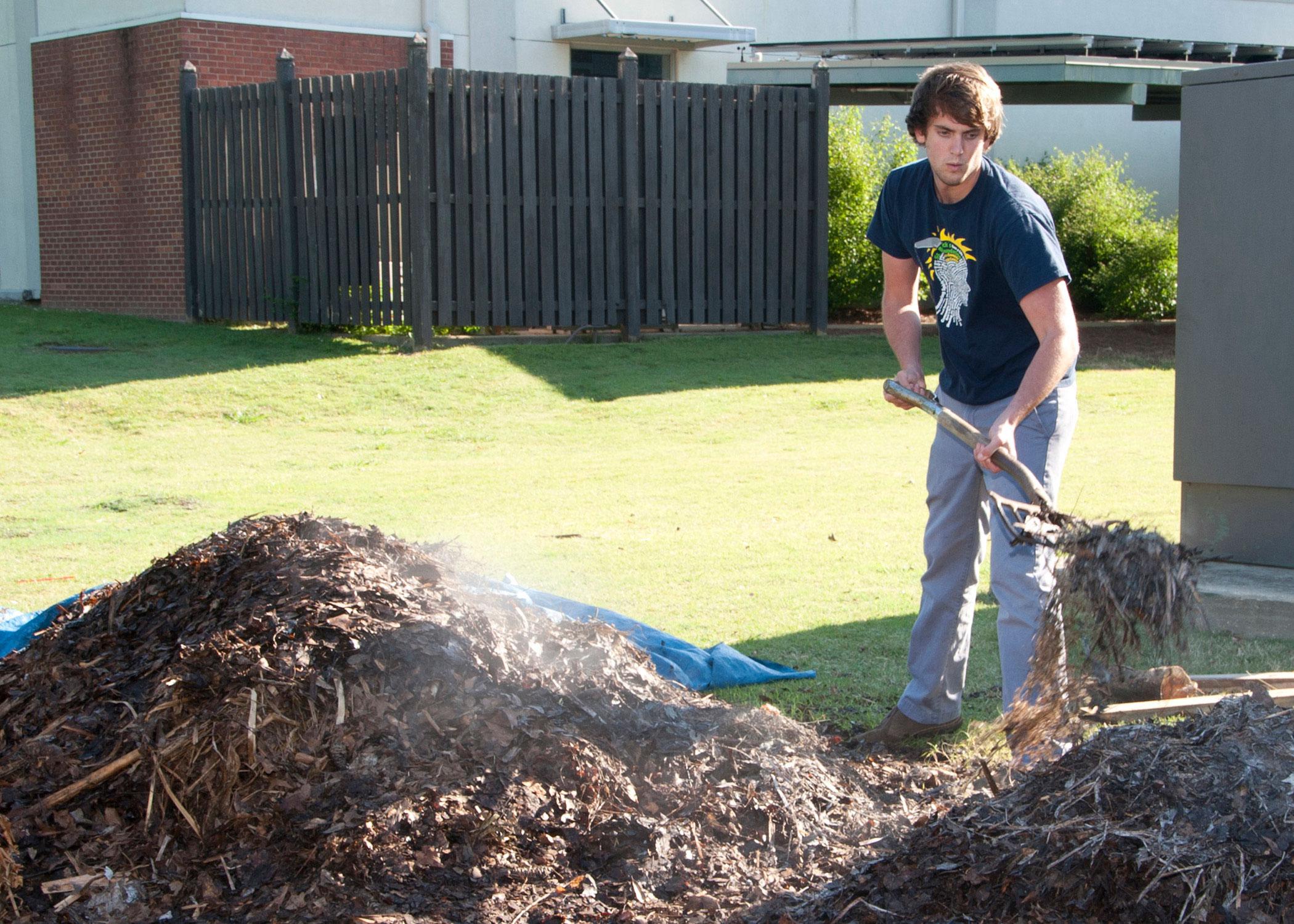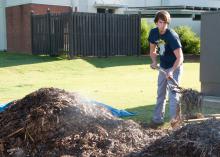Information Possibly Outdated
The information presented on this page was originally released on August 20, 2012. It may not be outdated, but please search our site for more current information. If you plan to quote or reference this information in a publication, please check with the Extension specialist or author before proceeding.
Compost brings added success to garden soil
One of the final gifts a productive garden can give us is raw materials to compost for use in the next year’s garden.
As we move into autumn, many of us will be cleaning up the garden, pruning and getting rid of leaves. A lot of this yard trash will end up at the curb for the city to pick up. Some of this will be chipped and composted for municipal use. The rest probably will end up in the landfill, which is not ideal.
Why not put these materials in your compost bin? If you are not already composting, fall is a great time to start a compost bin. The benefits of adding compost to your garden and landscape are numerous, and your plants will be most appreciative.
You can use compost as a soil amendment, as mulch around your plants or both. When used as a soil amendment in sandy soils, compost adds texture and improves the soil’s water-holding capacity. In tight, clay soils that hold too much water, the addition of compost will improve soil drainage.
Compost helps keep the garden soil healthy by increasing earthworm populations; earthworms aerate and loosen the soil. Composting also recycles essential plant nutrients that feed our growing plants.
Another big benefit, especially to thrifty gardeners, is that compost is free. When you use compost, you won’t have to buy bags of soil conditioners and other commercially bagged soil amendments.
We always hear about the importance of location in real estate, but location is just as important for your compost pile or bin. If it’s too far away, it will not be used. If it’s too close to the house, it may create an unsightly scene in the landscape.
Build your compost bin close to the garden. Try to avoid a location that has standing water during rainstorms. If you place it near trees, their root systems will find your compost pile, use the nutrients and make harvesting your finished compost difficult.
There are many styles of composting piles, bins and structures. Which one to use is up to the individual gardener. However, taking care of the composting process is more important than the style you choose. If left alone, the organic matter in your bin will decompose on its own, but with a little work, you can increase the rate of decomposition.
The first thing to do is turn, or mix, the compost pile, which does a couple of important things. For one thing, it evenly distributes the heat generated by decomposition. For another, it brings oxygen into the center, where microorganisms can use it. Turn the pile every time you add fresh materials to move them into the center.
You can insert a perforated drainage pipe into your compost pile to introduce oxygen to the center of the compost pile or bin.
Moisture is also important for the health and activity of the microorganisms in your compost bin. There is less activity when the pile is dry, so composting takes place more slowly. During dry periods, water the compost pile, but not too much. Excessively wet compost can create anaerobic conditions that smell bad. During periods of heavy and prolonged rain, place a tarp on the pile to help control the moisture content.
For more detailed information on building new compost bins or improving your current compost skills, request the Mississippi State University Extension Service publication P1782, Composting for the Mississippi Gardener, from your local county Extension office.



